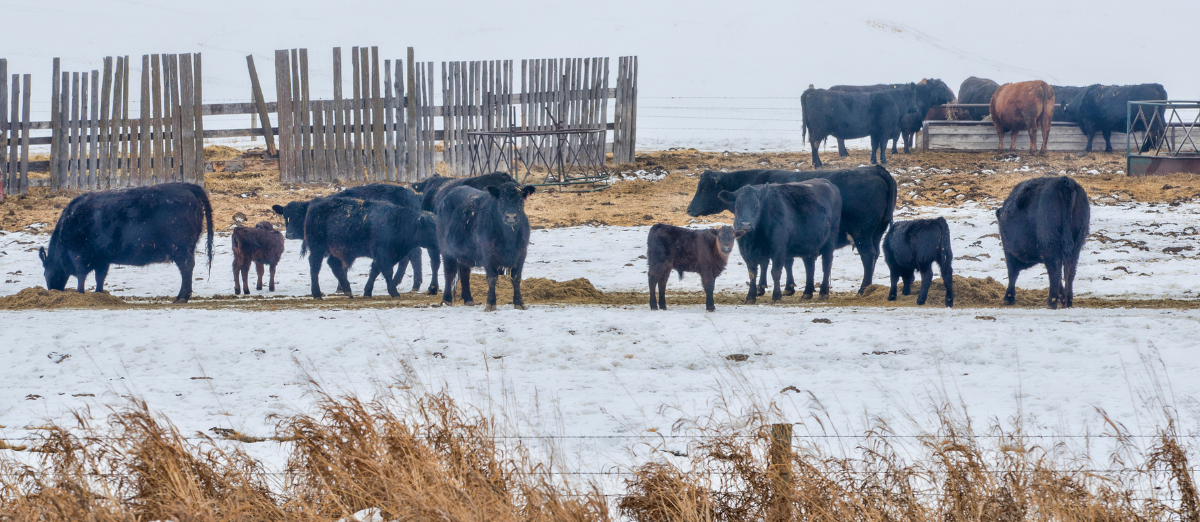Beef Cattle Numbers Continue to Decline
Beef Cattle Numbers Continue to Decline

USDA-NASS released their January 1, 2022 cattle inventory estimates on January 31st. Beef cow slaughter was significantly higher in 2021, so expectations were for continued contraction of cattle inventory. The USDA report confirmed that and provided some perspective on the magnitude of these decreases. Total cattle and calves were down by 2%, which was a slightly larger decrease than pre-report estimates. As an economist in a predominantly feeder cattle state, I tend to pay more attention to the number of beef cows in the US, which was down by about 2% as well.
An important note to the report was that the January 1, 2021 beef cow inventory estimate was revised downward by over 300 thousand cows, which is about 1%. Perhaps a better way to put beef cow numbers in perspective is to consider the total change in beef cow inventory over the last three years. From the recent high in 2019, beef cow inventory is down by more than 1.5 million head, which is about 5% of the total cowherd. Put simply, calf crops are getting smaller and will continue to do so in the coming year, which is bullish for feeder cattle markets. The following chart plots US beef cow inventory going back to 1970.
Figure 1: January 1 U.S. Beef Cow Inventory (1970 to 2022)
(1000 head)
source: USDA-NASS and Livestock Marketing Information Center
Heifer retention is also important as it provides some perspective on future trends in beef cow inventory. January heifer retention estimates were down by more than 191 thousand from 2021, which is about 3%. This suggests continued contraction is likely during 2022. Of course, the weather will play a key role as well.
The Kentucky estimates were also interesting and many people had commented to me on how many cows had moved through auctions last year. USDA estimated a decrease in Kentucky beef cow numbers of 0.7% during the course of 2021. There was also a slight decrease in the January 2021 beef cow inventory estimate. I would not have been surprised if the beef cow inventory was even lower in Kentucky, but this does put the cowherd in the Commonwealth at the smallest level seen since 1968. Heifer retention was also estimated to be down by more than 7% in our state.
The cattle on feed estimate from this report is also worth discussion and stands out a bit as it shows a slight increase from last January. For perspective, I would point back to the January Cattle on Feed report, which reflects on-feed inventories at feedyards with one-time capacity over 1,000 head. First, heifers on feed were higher in that report, which is consistent with fewer heifers being held for replacement and continues to point to a decreasing cow herd going forward. More females are moving into the beef system. Secondly, and probably most significantly, December placements were up 6% in 2021. But, the largest increases were in the lower placement weight categories, which suggests they may be more a function of dry conditions in the Southern Plains forcing producers to move cattle out of wheat grazing programs. If this is the case, those are cattle that would have been placed on feed this spring, so it speaks more to the timing of their placement than total cattle supply.
The USDA report is summarized in the table below and the full report can be accessed at: https://downloads.usda.library.cornell.edu/usda-esmis/files/h702q636h/pn89f870n/jw828f69f/catl0122.pdf
Table 1: USDA January 1, 2021 Cattle Inventory Estimates
| 2021 (1,000 hd) | 2022 (1,000 hd) | 2022 as % of 2021 | |
|---|---|---|---|
| All Cattle and Calves | 93,789.5 | 91,901.6 | 98 |
| Cows and Heifers That Have Calved | 40,286.0 | 39,500.1 | 98 |
| Beef Cows | 30,843.6 | 30,125.1 | 99 |
| Milk Cows | 9,442.4 | 9,375.0 | 99 |
| Heifers 500 pounds and Over | 20,200.1 | 19,776.0 | 98 |
| For Beef Cow Replacement | 5,803.1 | 5,611.5 | 97 |
| For Milk Cow Replacement | 4,608.5 | 4,450.6 | 97 |
| Other Heifers | 9,788.5 | 9,713.9 | 99 |
| Steers 500 Pounds and Over | 16,787.8 | 16.579.7 | 99 |
| Bulls 500 Pounds and Over | 2,210.5 | 2,109.6 | 95 |
| Calves Under 500 pounds | 14,305.1 | 14,936.2 | 97 |
| Cattle on feed | 14,667.4 | 14,692.6 | 100 |
|
2020 (1,000 hd) |
2021 (1,000 hd) |
2021 as % of 2020 |
|
| Calf Crop | 35,495.5 | 35,085.4 | 99 |
source: NASS, USDA
Recommended Citation Format:
Burdine, K. "Beef Cattle Numbers Continue to Decline." Economic and Policy Update (22):2, Department of Agricultural Economics, University of Kentucky, February 2nd, 2022.
Author(s) Contact Information:
Livestock
